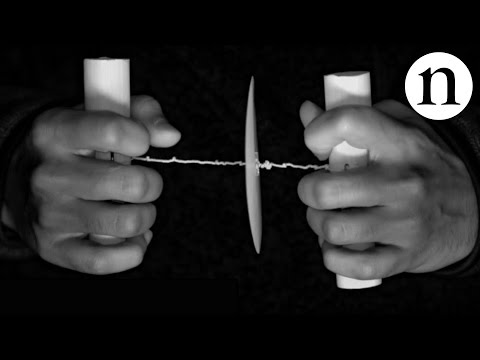
Breaking News
 Tucker Exposes Trump Would-Be Assassin Thomas Crooks' Social Media History, The FBI Coverup...
Tucker Exposes Trump Would-Be Assassin Thomas Crooks' Social Media History, The FBI Coverup...
 This Was A Major Red Flag In 2008, And Now It Is Happening Again!
This Was A Major Red Flag In 2008, And Now It Is Happening Again!
 Trump orders DOJ probe into Epstein's alleged ties with JPMorgan, Clinton and other Democrats
Trump orders DOJ probe into Epstein's alleged ties with JPMorgan, Clinton and other Democrats
Top Tech News
 Blue Origin New Glenn 2 Next Launch and How Many Launches in 2026 and 2027
Blue Origin New Glenn 2 Next Launch and How Many Launches in 2026 and 2027
 China's thorium reactor aims to fuse power and parity
China's thorium reactor aims to fuse power and parity
 Ancient way to create penicillin, a medicine from ancient era
Ancient way to create penicillin, a medicine from ancient era
 Goodbye, Cavities? Scientists Just Found a Way to Regrow Tooth Enamel
Goodbye, Cavities? Scientists Just Found a Way to Regrow Tooth Enamel
 Scientists Say They've Figured Out How to Transcribe Your Thoughts From an MRI Scan
Scientists Say They've Figured Out How to Transcribe Your Thoughts From an MRI Scan
 SanDisk stuffed 1 TB of storage into the smallest Type-C thumb drive ever
SanDisk stuffed 1 TB of storage into the smallest Type-C thumb drive ever
 Calling Dr. Grok. Can AI Do Better than Your Primary Physician?
Calling Dr. Grok. Can AI Do Better than Your Primary Physician?
 HUGE 32kWh LiFePO4 DIY Battery w/ 628Ah Cells! 90 Minute Build
HUGE 32kWh LiFePO4 DIY Battery w/ 628Ah Cells! 90 Minute Build
 What Has Bitcoin Become 17 Years After Satoshi Nakamoto Published The Whitepaper?
What Has Bitcoin Become 17 Years After Satoshi Nakamoto Published The Whitepaper?
This super-cheap paper centrifuge can spin 125,000 times per minute

Bioengineer Manu Prakash recreates expensive scientific equipment using incredibly cheap materials. This quest has led to a paper microscope with components that cost less than a dollar and a music-box-inspired lab-on-a-chip that could cost 4500 times less than comparable devices. His latest contribution to what he calls "frugal science" is a paper centrifuge powered solely by human hands.
To test a person for diseases such as malaria, HIV, and tuberculosis, scientists spin samples of the patient's blood, urine, or stool in a centrifuge. Thanks to centrifugal force, the spinning motion separates cells of different weights—such as pathogens in the blood—from the rest of the sample. Researchers can then look at the separated cells under the microscope to identify the disease.
But a bench-top centrifuge, which whirls at around 20,000 revolutions per minute (rpm), makes for less-than-ideal field equipment. It's bulky and heavy, costs hundreds (if not thousands) of dollars, and relies on electricity. Some researchers have tested out salad spinners or egg beaters as possible low-cost alternatives, but these options barely reach 1,200 rpm.

 A WORLD OF DEBT
A WORLD OF DEBT
 Unbanked In A Connected World
Unbanked In A Connected World

